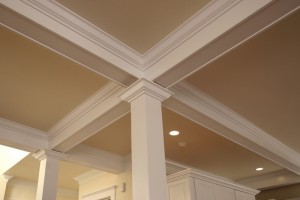
How Do You Choose the Best Wood for Trim Molding?
When cutting your own crown molding and trim molding, there are a lot of different types of wood to choose from. A trim carpenter will make the distinction between two basic grades of trim work; paint grade and stain grade.
Basically, the two terms separate into trim joints that can be caulked and joints that cannot, and will determine the dimensional tolerances that must be adhered to by a carpenter.
Stain-grade work is finished clear, such that the carpenter needs to create near perfect joinery. Paint-grade work can be less exacting, since any minor blemishes and mismatches on joints can be covered up with the skilful application of caulk and primer paint coats.
HARD WOODS VS. SOFT WOODS
Stain grade moldings typically are made from more expensive hardwoods; the paint grade trim work is usually softwood, but as always in woodworking, there are the odd exceptions.
The softwood vertical-grain Fir, is sometimes used for both grades moldings. The hardwood Poplar is sold as paint grade molding due to its relatively low expense and durability. Paint grade moldings will often be stocked by millwork shops in locally inexpensive hardwoods like white pine, yellow pine or fir.
OTHER CONSIDERATIONS FOR TRIM MOLDING
Other than whether you want to stain or paint your trim moldings, a trim carpenter will also look at the wood’s workability, which includes how easy it is to cut, shape and sand, and how well it will hold a nail. Soft woods, being more bendable and compressible, conforms better to irregularities and takes well to nailing, so is easier to install.
Tight grained woods such as basswood, pine and cedar give clean cuts and leave a surface that is paint or stain ready, while an open grained wood such as oak or walnut will need to have its grain filled before painting or staining.
MAHOGANY INC., YOUR COMMERCIAL MILLWORK COMPANY
Mahogany, Inc. is a general contractor specializing in quality construction for projects across a wide range of industries. Located in southwest Baltimore, we employ 100 persons, and are one of the largest minority-owned businesses in the state of Maryland. Make sure to check back with our blog every week and find us on social media for important updates!
